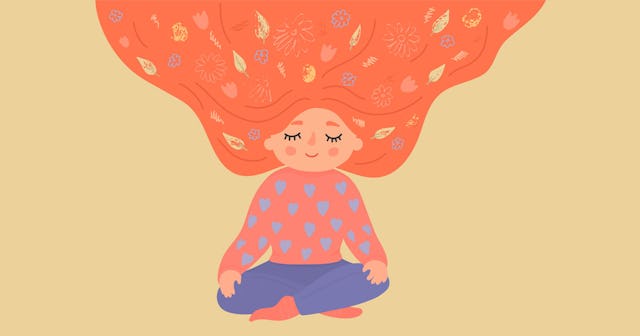Mindfulness Can Make Our Kids Less Anxious And Stressed––Now And In The Future

When we are trying to be mindful, we focus on the present, not the future, or the past. We live in the moment. Sometimes, this is difficult to do, even as an adult. But experts say that it is never too early to start teaching our children to be mindful people. Scary Mommy spoke to Carole Kramer Arsenault, founder of Boston Baby Nurse & Nanny to learn more about helping our children to be mindful.
Kramer said that teaching our children to be mindful starts directly with the parents. We must model mindful thinking by living in the moment with our children. This helps us to build awareness of things like our surroundings and our thoughts without judgment.
“As parents and caregivers of children, at any phase of their development, we have to first learn the importance of mindfulness and then cultivate a practice that allows us (as adults) to better cope with stress in our lives, “she told Scary Mommy. “Unfortunately, this is not something that most of us learn at school or in the workplace. Most adults stumble upon these practices because some have not developed an emotional ‘toolbox’ to help us respond to stress in a positive manner.”
So what can we do to reduce stress in our lives and teach our children to be mindful? Kramer suggested things like breathing techniques, yoga, and regular self-care rituals. All of these things help us to center ourselves and to train our brains to be more mindful. When it comes down to it, this is really all about our brain function and how we respond.
No matter our age, our brains will react to anxiety and stress triggers the same way. Our primitive limbic system is what takes us away from being mindful. This part of the brain takes control of our moods and is responsible for instinctual responses. In order to be more mindful, we need to engage our cortex.
Evgeny Atamanenko/Shutterstock
The cortex allows us to have higher intellectual processing. When we are processing from a state of calm, our responses tend to be more well thought out and not so focused on turmoil. She said that understanding the neurological data is key to helping us to be mindful.
“As a parent, it is helpful to understand the science behind mindfulness. The verdict has been out for many years, research is clear about the benefits of exposing kids to mindfulness at an early age,” Kramer explained. When we become angry, frustrated, resentful, etc., unhealthy hormones are released into our bodies. These hormones keep us in a state of constant stress. It has become normal.”
So if we want our children to be less stressed and anxious, how do we start? For starters, teaching a toddler how to work through a tantrum. Redirection and leaving a triggering environment can help. She suggested taking your child outside to be among nature and naturally calming things. Tantrums will happen, but if we don’t react negatively, it will be easier to help our child decompress . When children are grade school age we must validate our child’s emotions. We need them to know that they are accepted without judgment. All of these things are also good to practice with teenagers, and we can also introduce things like breathing exercises and yoga.
“But again, it all comes down to parents modeling the best behavior techniques for our children. No matter what you tell children, they learn most of their behavior and attitudes from observing the adults in their lives. Let children hear how you handle conflict mindfully, engage in healthy activities that your kids will mimic: slow breaths, yoga, meditate, let your kids overhear your thinking out loud when you go through challenges,” she said.
This is not always easy stuff. Sometimes when we are angry and we are frustrated we act on those feelings emotionally and negatively. That is OK. No one is perfect. But if we try to be more mindful of our behaviors, and who is watching them, we are in a better place both physically and emotionally.
How we react is our choice and as Kramer explained, it is all about brain function. We need to train our brains to engage the cortex and focus on the positive. If we choose to do things like breathe deeply when triggered and to take care of our minds and bodies daily, this will help.
“We want to give this new generation of kids another option. There are many different ways to look at the same situation, we can pick up any set of colored glasses and see whatever we choose to see. Or we can opt not to buy into the story our minds want to create. Our inner thoughts affect our external environment,” Kramer concluded.
Being mindful isn’t just about being aware of your surroundings; it also incorporates being mindful of your brain’s functions and how your choices affect those functions. Mindfulness is a choice. We need to help our children to see that and to do their best to make that choice.
More on creating long-lasting mindfulness habits:
How to Meditate with Your Kids
A Mindfulness Program Could Be The Secret To Helping Our Children Be Happier
Headspace Is Coming To Netflix To Teach Us All How To Meditate In 2021
This article was originally published on